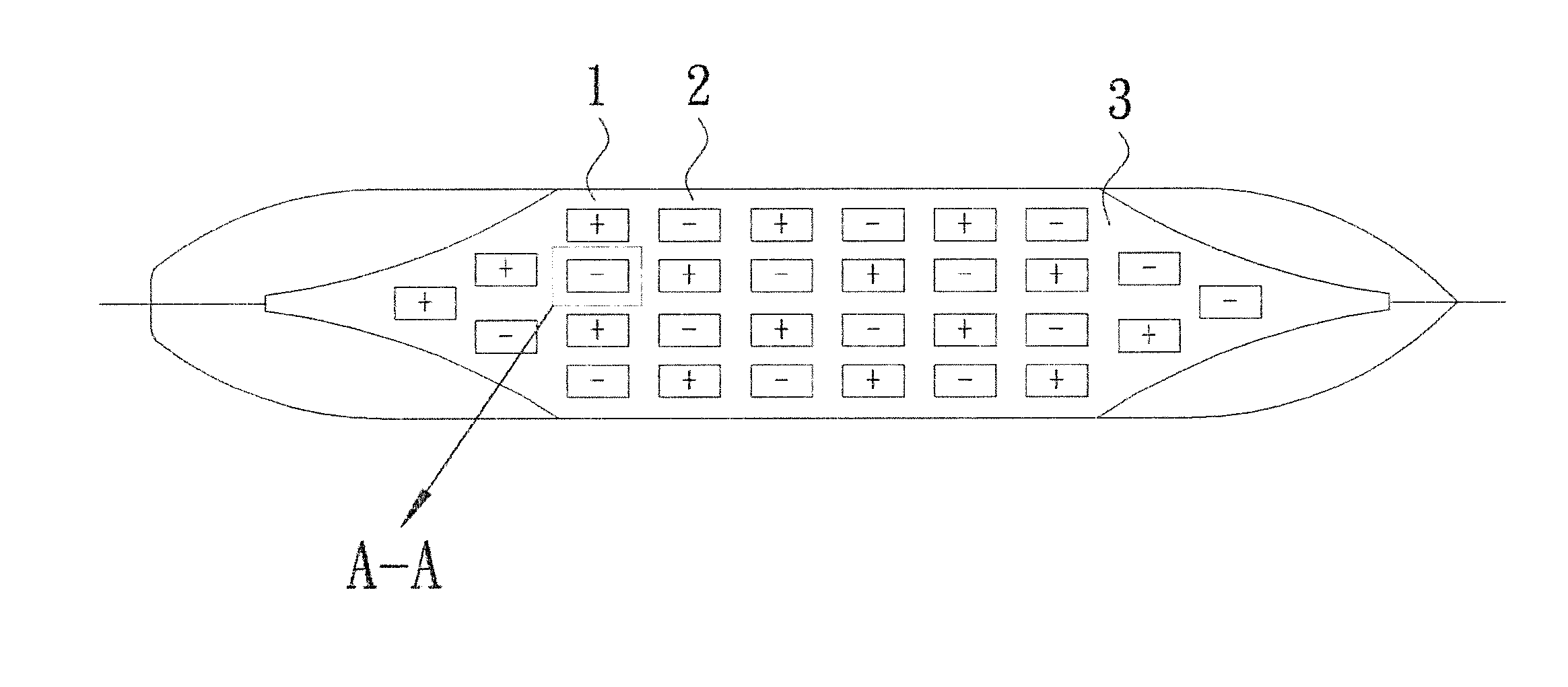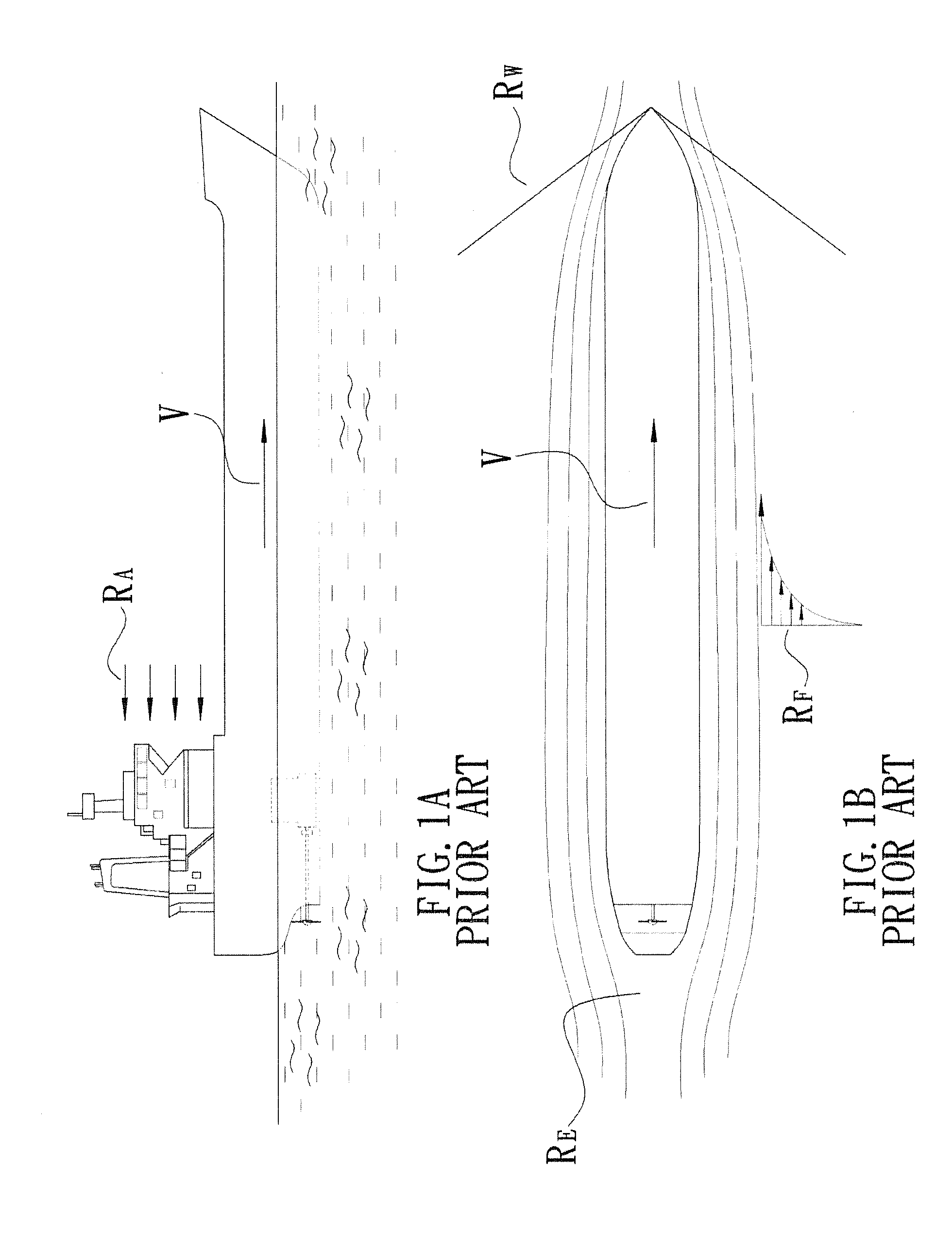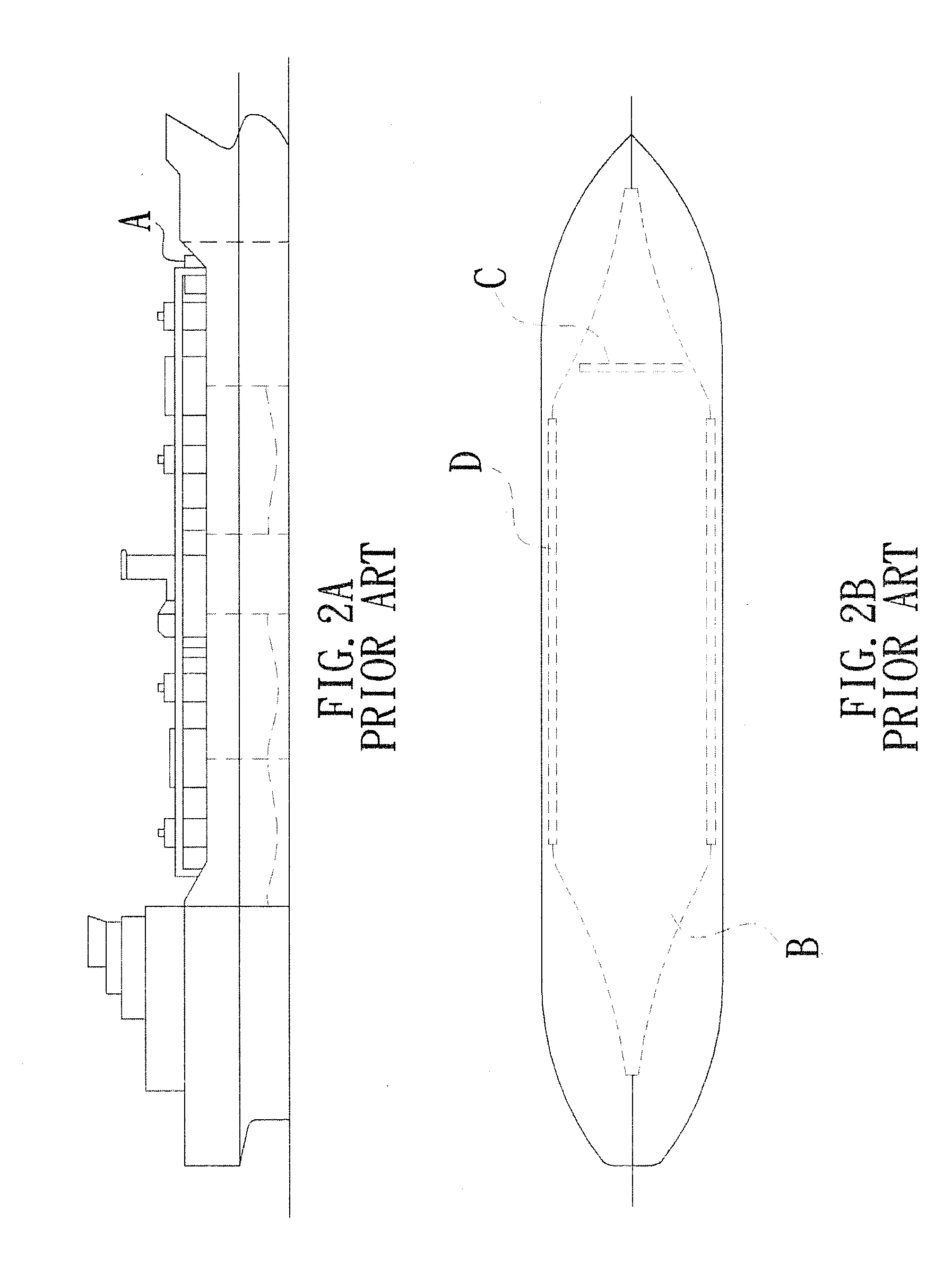Device with microbubble-induced superhydrophobic surfaces for drag reduction and biofouling prevention and device for biofouling prevention
a microbubble and superhydrophobic technology, which is applied in the direction of special-purpose vessels, vessel construction, transportation and packaging, etc., can solve the problems of not providing the drag reduction effect, the microbubbles cannot cover most of the hull surface, and the drag reduction effect of the microbubble drag reduction device is less than 2% on the actual ship
- Summary
- Abstract
- Description
- Claims
- Application Information
AI Technical Summary
Benefits of technology
Problems solved by technology
Method used
Image
Examples
Embodiment Construction
[0037]With reference to FIGS. 3A, 3B, 4A, 4B, 5, and 6, a device with microbubble-induced superhydrophobic surfaces for drag reduction and biofouling prevention includes a plurality of anodic microporous plates 1 and a plurality of cathodic microporous plates 2 mounted to a hull surface of a ship. In this embodiment, the anodic microporous plates 1 and the cathodic microporous plates 2 are mounted to a bottom plate 3 of the hull. Each of the anodic microporous plates 1 and the cathodic microporous plates 2 includes a surface having a plurality of micropores 4. The structure of each cathodic microporous plate 2 is identical to that of each anodic microporous plate 1, which is shown in FIG. 6. The device with microbubble-induced superhydrophobic surfaces for drag reduction and biofouling prevention further includes a direct current (DC) power supply 5. The DC power supply 5 includes a positive pole electrically connected to each anodic microporous plate 1 and a negative pole electrica...
PUM
 Login to View More
Login to View More Abstract
Description
Claims
Application Information
 Login to View More
Login to View More - R&D
- Intellectual Property
- Life Sciences
- Materials
- Tech Scout
- Unparalleled Data Quality
- Higher Quality Content
- 60% Fewer Hallucinations
Browse by: Latest US Patents, China's latest patents, Technical Efficacy Thesaurus, Application Domain, Technology Topic, Popular Technical Reports.
© 2025 PatSnap. All rights reserved.Legal|Privacy policy|Modern Slavery Act Transparency Statement|Sitemap|About US| Contact US: help@patsnap.com



